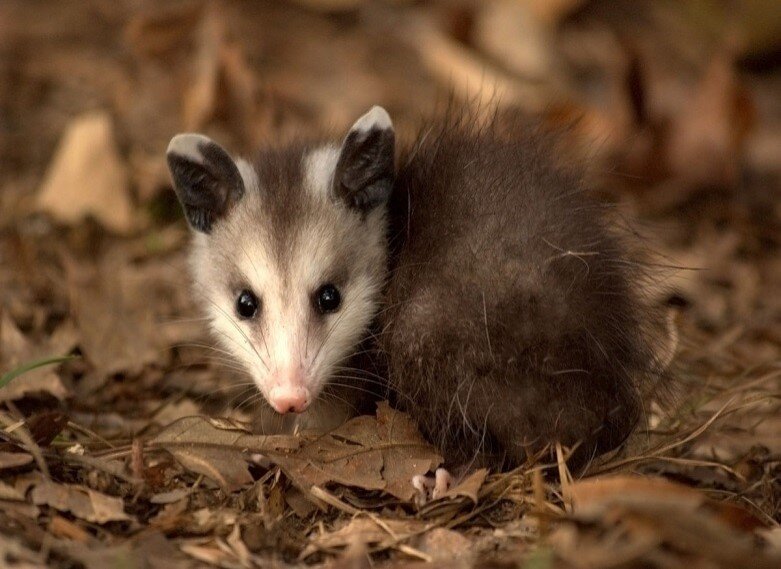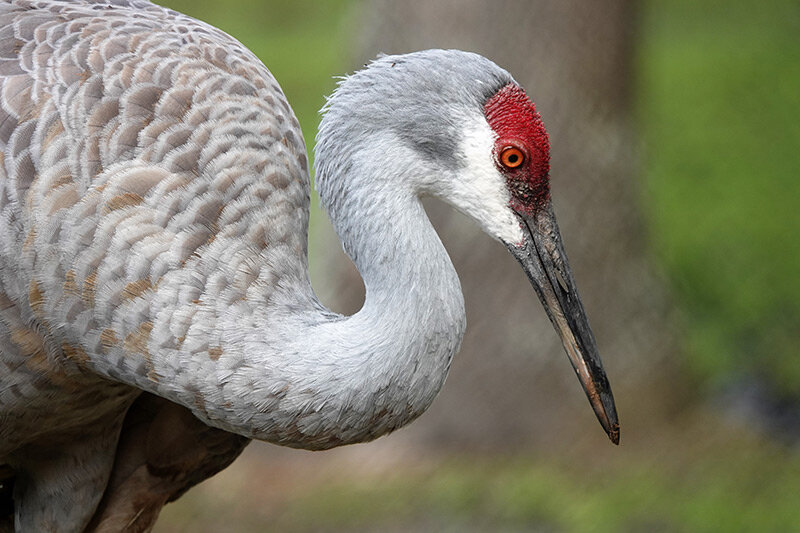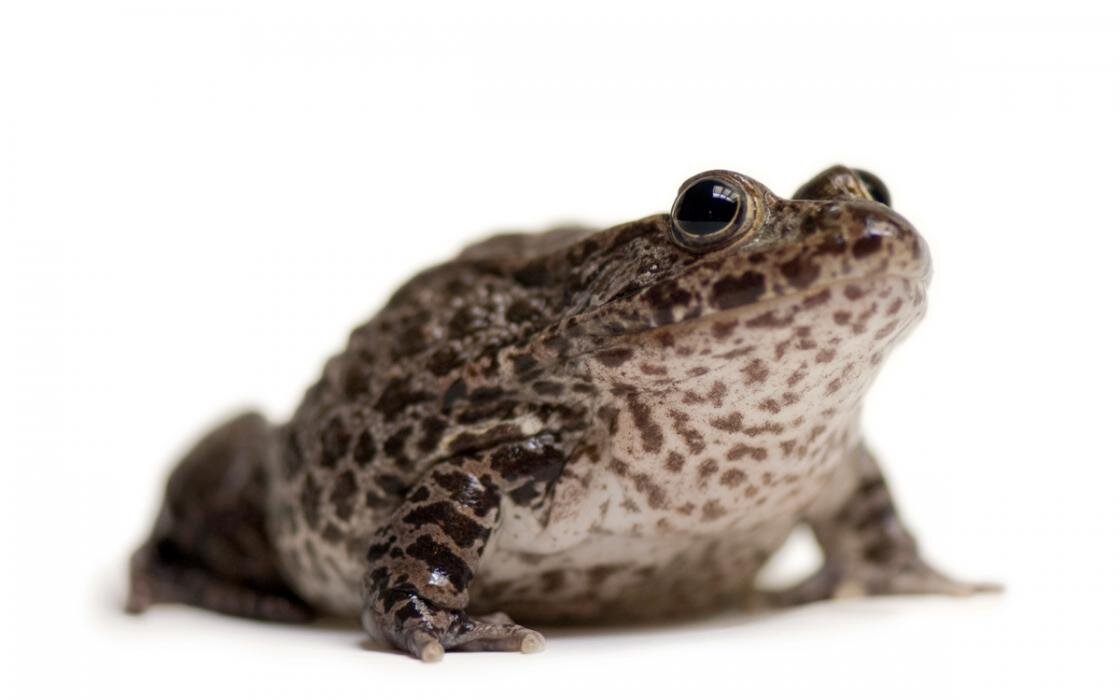Restorations Part III: Techniques
Restoration Techniques — the final part of our three part series on the restoration of native ecosystems on the Mississippi Coastal Plain.
Species Removal
Fire is the natural force for maintaining a longleaf pine ecosystem. Dormant-season fires are used to reduce litter buildup when there is a significant amount of material that has accumulated on the ground which a fire would use for fuel. These fires remove the fuel to help prepare a property for restoration. Once a restoration has been completed, growing-season fires are used to maintain the structure, species composition and function of longleaf pine ecosystems. However, fire is not a practical solution for all properties because of adjacent land use (such as residential or commercial development where fire could pose a danger to settlements or nearby airports where smoke may interfere with visibility).
When fire is not appropriate for the removal of debris and non-native vegetation from a site, roller-chopping or mulching may be a necessary step in the restoration process. This involves using machines to remove large stands of woody vegetation from a property. When a site is less degraded, selective manual removal of vegetation to create canopy gaps or remove distinct stands of invasive species may be appropriate. This can be achieved using hand tools, but herbicide application is sometimes required, depending on the type of species that has colonized a property. The roots of some species are evolved to survive mechanical interference, so chemical methods are used in those circumstances.
Afforestation
While bottomland hardwood and bayhead swamp ecosystems are typically found in the same landscape as longleaf pine ecosystems, it is the restoration of a more natural hydrological regime that is key to their rehabilitation. Particular attention must be paid to soil type, nutrient availability and moisture. While flood-tolerant species are well-adapted to drier sites, they will not survive being planted directly into wet sites. Therefore, while the native ecosystems host a wide variety of mature woody vegetation, it can take significant time to re-establish a functional ecosystem. More tolerant species need to be planted and become established before species with more specific needs can be reintroduced as conditions become favorable. The stabilization of slopes, management of runoff and removal of water control structures must also be done slowly to allow woody vegetation time to adapt.
Planting woody seedlings is a common technique used by the Land Trust in all our restoration projects across all ecosystem types. In recent years, we have planted tens of thousands of woody plants on many properties across the Mississippi coastal plain. Most frequently planted is longleaf pine, but we also plant a dozen other species of woody vegetation that are native to the region depending on the specific conditions of a property. We also frequently plant native grasses and forbs and sow understory seed. Patience is key to restorations – while the removal of species has a sudden visual impact on a property, it takes many years for native species of woody plants to regrow into a forest system.
Stewardship
The natural forces which maintained native ecosystems here on the Mississippi coastal plain no longer function as they once did. Therefore, management of restored ecosystems is critical to ensuring their survival. A restored ecosystem will quickly become overrun with invasive species and revert to a degraded system without management. Successfully restored ecosystems require constant stewardship, but with it, they will thrive and provide habitat for native species. Please support the Land Trust so that we can continue doing this work on the Mississippi coastal plain so that future generations can enjoy the natural ecosystems of this beautiful area.
Restorations Part II
This is the second part in a series of articles about the restoration of native ecosystems in southern MS which we are publishing to help people understand the periodic actions we take on some of our properties. Please contact us at info@ltmcp.org with questions, comments or concerns – we would love to hear from you!
Property during a restoration
Other Common Native Ecosystems and the Case for Restoration
Bottomland hardwoods are forested wetlands that once covered vast acreage in the southeast on the lands adjacent to rivers, which would flood with the overflow from rivers during storms or heavy rains. These ecosystems are both characterized and maintained by the natural seasonal hydrologic regime of alternately wet and dry periods, with some parts of the system remaining more wet than others. Species presence varies depending on the hydrology of a particular area. Bayhead swamps are also forested wetlands, but they are associated with smaller creeks and tributaries. While they are similarly inundated with water, their soils tend to stay saturated most of the time.
In addition to managing floodwater, these ecosystems are important for helping to improve water quality by filtering nutrients, processing organic waste, and reducing sediment. They also provide significant food for a wide variety of native species. Because the soil of these forest types is typically rich in nutrients as a result of deposits of large amounts of leaf litter from flooding and also from the variety of species that grow there, the vegetation tends to produce a large quantity and variety of fruit and nuts. These ecosystems are also rich habitat for native species because of the variety of vegetation and availability of water.
The changes that settlement and urbanization brought to all our native ecosystems on the Mississippi coastal plain has resulted in fragmentation, changes to species composition and loss of biodiversity. One of the biggest challenges to reestablishing native ecosystems are invasive species. These are species that are non-native, but flourish under certain conditions in a new environment.
Before Restoration
Invasive species compete with native species for limited resources, and if conditions are favorable, can outcompete native species resulting in an ecological shift. Whereas native species evolved over time to flourish under the natural conditions alongside other native species, each filling a niche role, invasive species take advantage of favorable conditions and can dominate an area without natural balance. They do not provide the same kind of habitat, food sources or other ecological benefits as native species do.
Restoration of degraded ecosystems that have been overrun by invasive species, due to the fact that the natural forces of fire and flooding are no longer functioning as they once did is possible, but the techniques can be visually drastic. Removing invasive species, especially those which have taken over an area, can leave a property free of vegetation for a period of time until the native species can be re-established. In addition, a restored native system may look very different than it had when it was overrun with invasive species.
During Restoration
After Restoration
Once restored, stewardship techniques must continue to be used to mimic the types of disturbance (like fires and floods) that used to occur naturally to maintain restored native ecosystems, or invasive species will gain a foothold once again.
The next article in this series will detail some of the techniques the Land Trust uses to restore and maintain native ecosystems.
Restoration of Native Ecosystems of the MS Coastal Plain
This is the first part in a series of articles that outline the goals and procedures for the restoration of native ecosystems in southern Mississippi.
This is the first part in a series of articles that outline the goals and procedures for the restoration of native ecosystems in southern Mississippi. The Land Trust is publishing these articles to help the public understand periodic actions we take on some of our properties. Please contact us at info@ltmcp.org with questions, comments or concerns – we would love to hear from you!
Part I: The Native Longleaf Pine Ecosystem
The Land Trust often works on the restoration of native ecosystems. The longleaf pine ecosystem is an ecosystem we frequently work to restore, because it was historically very common here on the Coastal Plain. In fact, it covered a huge portion of the southern United States. Comprised of forests and savannas, the ecosystem occurred on sites ranging from wet, poorly drained flats to uplands. Fire would frequently affect the ecosystem, but the native species were adapted to not just survive, but thrive as a result.
Longleaf pines were a keystone species of the native ecosystem. In addition to providing fuel for fire, the growth habits of the longleaf pine tree helped encourage fire to remain at the surface of the ground only, and the trees themselves are uniquely adapted to survive in fire-prone environments.
Prior to settlement, fire would occur every few years, usually started from lightning strikes. The fallen pine needles from longleaf pine trees are highly flammable and would therefore actually facilitate both the ignition and the spread of fire. Fires would stay low to the ground because that was where the fuel was found. These “surface fires” moved through the ecosystem quickly because lightning struck regularly, so there wasn’t ever time for significant amounts of fuel to accumulate.
As seedlings, longleaf pines initially focus most of their energy on root growth. They grow a tuft of needles surrounding a large bud, but don’t grow a stem until their taproot has had time to grow deeply into the ground to reach water. Then they bolt, growing 3-6’ quickly which places the bud and needle tuft out of reach of surface fires. In addition, longleaf pines branch only near the crown, so there simply isn’t fuel in the form of branches for fires to be able to use as fuel to travel up into the canopy.
Herbaceous material thrives in the understory of longleaf pine ecosystems. Many of the perennial grasses that made up the ground story of native longleaf pine ecosystems respond to fire events by flowering more prolifically, resulting in an increase of seed production following a fire. The abundant variety of flora that flourishes in the longleaf pine ecosystem makes them one of most biodiverse plant communities in the world.
Fire helped the native flora maintain site dominance because other species that were less adapted to fire could not become established in the fire-prone ecosystem. This changed with fire suppression, which began as a result of settlement starting in the late 1800s. In addition, vast tracts of longleaf pine were harvested by the commercial logging industry for lumber and pine resin for the maintenance of wooden ships, and the land was replanted with faster growing species or kept clear for crops and cattle. Ultimately, the range of the longleaf pine ecosystem was reduced by about 97%, with the remaining ecosystem fragmented into isolated blocks.
The Land Trust works on restoration of longleaf pine ecosystems in order to reestablish some of the amazing biodiversity that flourished in these systems.
Stay tuned for our next post about the restoration of native ecosystems!
Tree Plantings at LTMCP
LTMCP will be planting over 9,600 trees this year
LTMCP will be planting over 9,600 trees this year across several restoration sites. Turkey Creek, Schwan, and Bayou Auguste will all receive a mixture of 14 different tree and shrub species including Wax Myrtle, Green Ash, Sycamore, Cherrybark Oak, Laurel Oak, Willow Oak, Cypress, and Persimmon. The Land Trust will be utilizing several volunteers through Climb CDC to get the trees planted.
Planting hardwood trees after the last frost of the season, but before Spring blooms, allows for the roots of the young saplings to become better established. This increases the chances of survival. The trees planted on Land Trust sites help to provide food and shelter for wildlife. Air quality is improved by the trees intake of carbon dioxide in order to produce oxygen.
Bayou Auguste
Bayou Auguste is located in west Biloxi. It is a tidally influenced estuarine marsh system home to countless birds, fish, and even an alligator or two.
Bayou Auguste is located in west Biloxi. It is a tidally influenced estuarine marsh system home to countless birds, fish, and even an alligator or two. Siltation of this system degraded the bayou to a point where native plants and animals were struggling to survive here. Siltation is a form of water pollution caused by soil erosion that unfortunately occurs frequently in urbanized waterways in which silt, clay, and other sediments remain suspended in the water, causing poor water quality, increased flooding potential, and the loss of plants resulting in the destruction of suitable breeding grounds and habitat.
The Land Trust partnered with Cypress Environmental in order to lead the engineering design and construction administration. The Gulf Coast Community Design Studio organized and assisted volunteers from Climb CDC in an effort to restore Bayou Auguste. First, 1,174 cubic yards of material was removed, and the area regraded to a slope that is suitable for the native marsh plants that once dominated the bayou. Invasive species were removed, and erosion control materials were installed to stabilize the bank in areas vulnerable to the tidal action that impacts the site. Finally, 5,900 native marsh grasses were planted, including Juncus roemerianus, Spartina alterniflora, Spartina patens, and Schoenoplectus californicus. An additional 30 native trees were planted on the banks of the bayou in order to further stabilize the shore and provide additional biodiversity to the area for improved habitat.
This is an example of work the Land Trust does in our community to improve the land, even on property we don’t have the ownership of.
Please check out the following websites for further information on our wonderful partners!
Cypress Environmental: https://cypressei.com/
Gulf Coast Community Design Studio: http://gccds.org/
Climb CDC: https://www.climbcdc.org/
Opposums
What do you think about opossums?
What do you think about opossums? I always thought of them being dirty and nasty and pretty disgusting creatures! We find them in our garbage cans and lurking around in our yards at night. But, after doing a little research about this mysterious night creature, I found out that they are really misunderstood and interesting. Yes, I said it, interesting!
The opossum is the only marsupial found north of Mexico and they carry and nurse their babies in their pouch for the first few months of their life. After that, they like to ride on their momma’s back till she has had enough! The funniest characteristic of the opossum is its ability to play dead in front of its predators. When they experience intense fear, it will seize up and flop to the ground where it will remain for hours staring blankly and sticking its tongue out. Hence the phrase, “playing possum”. It is totally an uncontrollable involuntary reaction triggered by stress!
Opossums gobble up 90% of ticks that attach to them and according to the National Wildlife Federation a single opossum consumes 5,000 ticks in a season. They also eat snakes and are immune from all snake’s venom except the coral snake. Opossums aren’t dirty either – they clean themselves with their tongue and paws thoroughly and frequently. They use their tails as an extra arm to help them build their nest or climb trees as I have seen on many of the Land Trust’s properties. Opossums build their nests along tree lines close to rivers and streams.
So the next time you see an Opossum in your yard or garbage can, remember he is a really cool marsupial that does amazing things for us!
MS Sandhill Cranes
The wet pine savanna was formerly a very common landscape of the coastal plain.
The wet pine savanna was formerly a very common landscape of the coastal plain. They were located in the southern coastal plain on flat areas which were saturated for at least a portion of the year, or sometimes as islands in peatlands or swamps. They are open, mostly treeless bogs comprised of herbaceous groundcovers. The plant communities in the wet pine savanna are some of the most diverse in North America, but conversion of the land to timber plantations and fire suppression led to their loss. Today, less than five percent of this habitat remains.
The remaining population of Mississippi sandhill cranes live solely in this habitat, which is also dotted with cypress strands and prairies. The cypress strands are forested wetlands which provide nesting sites for the birds, and the prairie provides feeding grounds. The Mississippi sandhill crane is a critically endangered, non-migratory species who mate for life, live for about 20 years, and have a distinctive red, unfeathered crown on their heads.
The Land Trust owns land directly adjacent to the Mississippi sandhill crane National Wildlife Refuge and is working with federal and state agencies to improve the habitat for these rare birds.
Dusky Gopher Frogs
The dry longleaf pine forest is one of the most biodiverse landscapes in the world…
The longleaf pine forest is one of the most biodiverse landscapes in the world, and the Land Trust is working to both protect remnants and reestablish it where possible. This forest type historically covered a huge area across the southern US, but today only about three percent of the original habitat remains in relatively small, fragmented patches. Dominated by longleaf pine trees, the forest type has a rich and diverse herbaceous understory. It provides critical habitat for nearly thirty threatened and endangered species, including the gopher tortoise, indigo snake, red-cockaded woodpecker and dusky gopher frog.
The dusky gopher frog is a about three inches long, ranging in color from black to brown or gray, and is covered with dark spots and warts. By the time it was listed as an endangered species, it was only found living near four ponds here in southern Mississippi. The Land Trust owns a property adjacent to one of these ponds, which the frogs use for breeding. We have been working with federal and state agencies to improve and increase the habitat for these rare frogs by reestablishing a dry longleaf pine forest around the pond through invasive species removal, tree planting and burning regimes.
Turkey Creek
Land Trust staffer Nick Goyette has been working with CDC Climb’s Conservation Corps to restore over 350 acres along Turkey Creek to a healthy mosaic of wet pine savannah and bottomland hardwood ecosystems.
Land Trust staffer Nick Goyette has been working with CDC Climb’s Conservation Corps to restore over 350 acres along Turkey Creek to a healthy mosaic of wet pine savannah and bottomland hardwood ecosystems. Protection of these wetlands adjacent to the creek has been vital in combating the effects of urbanization of the watershed.
Invasive species have taken over large areas adjacent to the creek. However, the Land Trust and CDC Climb have worked tirelessly to remove them. These areas were then planted with 8,500 native hardwood trees composing of 12 different species. We have also removed over 1,000 used discarded tires and other debris.
The Land Trust is pioneering new restoration techniques to restore wet pine savannah habitat. A combination of mechanical methods have been used to simulate burn events that historically managed these properties. Initial restoration activities have shown promising signs of positive recovery across the sites.

















